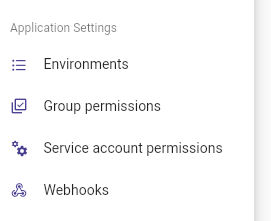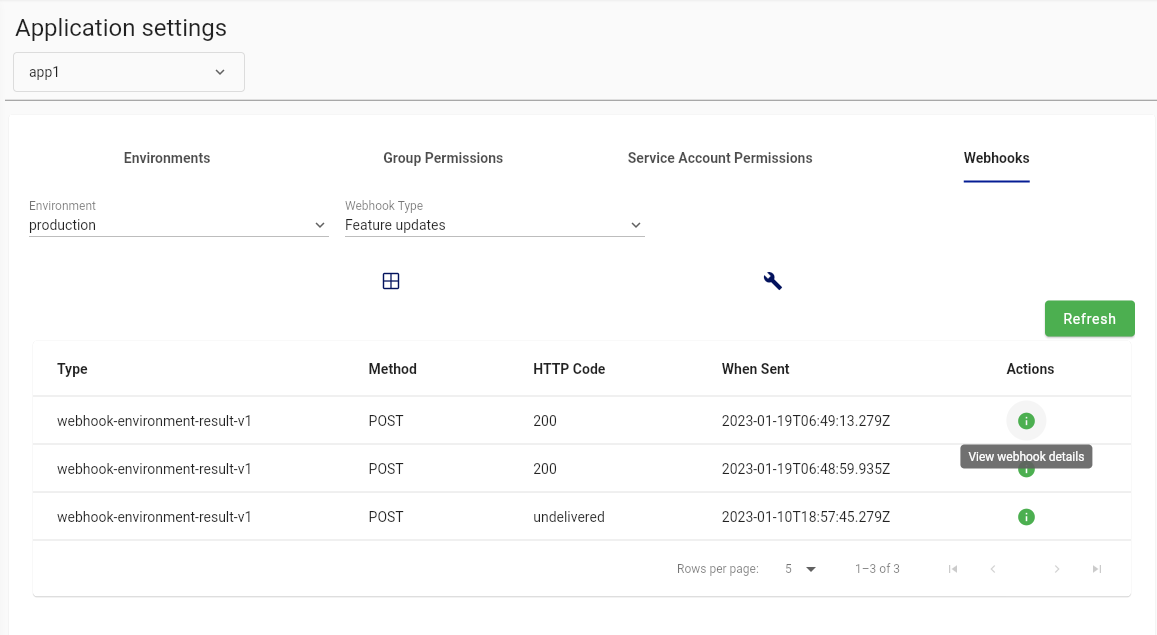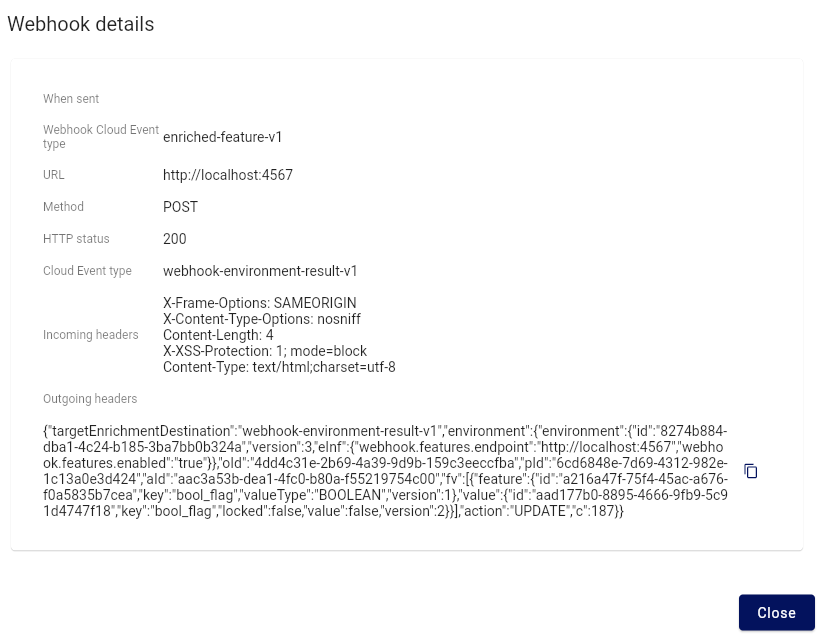Webhooks
With the 1.6.0 release comes a new feature of Webhooks. This allows you to configure a URL endpoint and appropriate authorisation or configuration headers, and the application will deliver the complete set of feature flags changes to that endpoint. E.g. changes of feature values, adding or deleting features. Configuration is done per environment.
Usage
Webhooks are designed to be per environment - you can have one webhook per environment. The system allows you to configure, enable/disable and test your webhook, and see what the results of the webhook are. All attempts at delivery are captured and stored in the system.

The Webhook UI allows you to see the webhook traffic for a given environment.

You can also drill down into the details of an individual request.

You can configure a webhook as shown on the screen below: the enabled status, the url destination, and any extra headers you need. Once you have saved it, you can test it and the result will show up on the Webhook Traffic page. Test button will only appear if webhook is enabled.

Data Format
The data is formatted in an OpenAPI document. The latest release
is in the releases.json file at API Releases.
To find the actual OpenAPI document, replace releases.json with the version.yaml, e.g.
Version 1.1.1
At the top level, it looks like this, where the full details of features are available, along with an array of features that actually changed.
components:
schemas:
EnrichedFeatures:
description: A full environment with all of its features. This will filter out any management environmentInfo data
required: [ environment, featureKeys ]
properties:
targetEnrichmentDestination: { description: 'If there is a specific target
for the data, everything else _should_ ignore it', type: string }
environment: { $ref: '#/components/schemas/PublishEnvironment' }
featureKeys:
description: These are the keys of the features that were updated
type: array
items: { type: string }